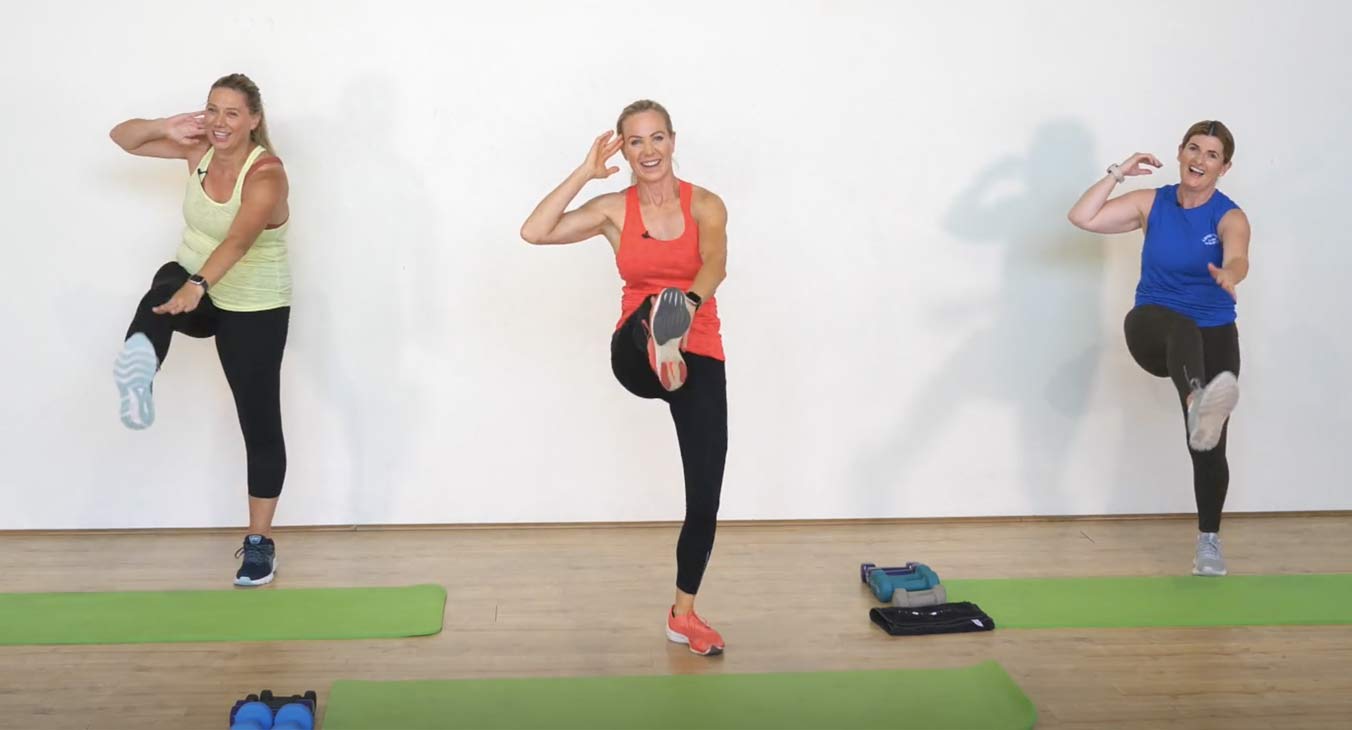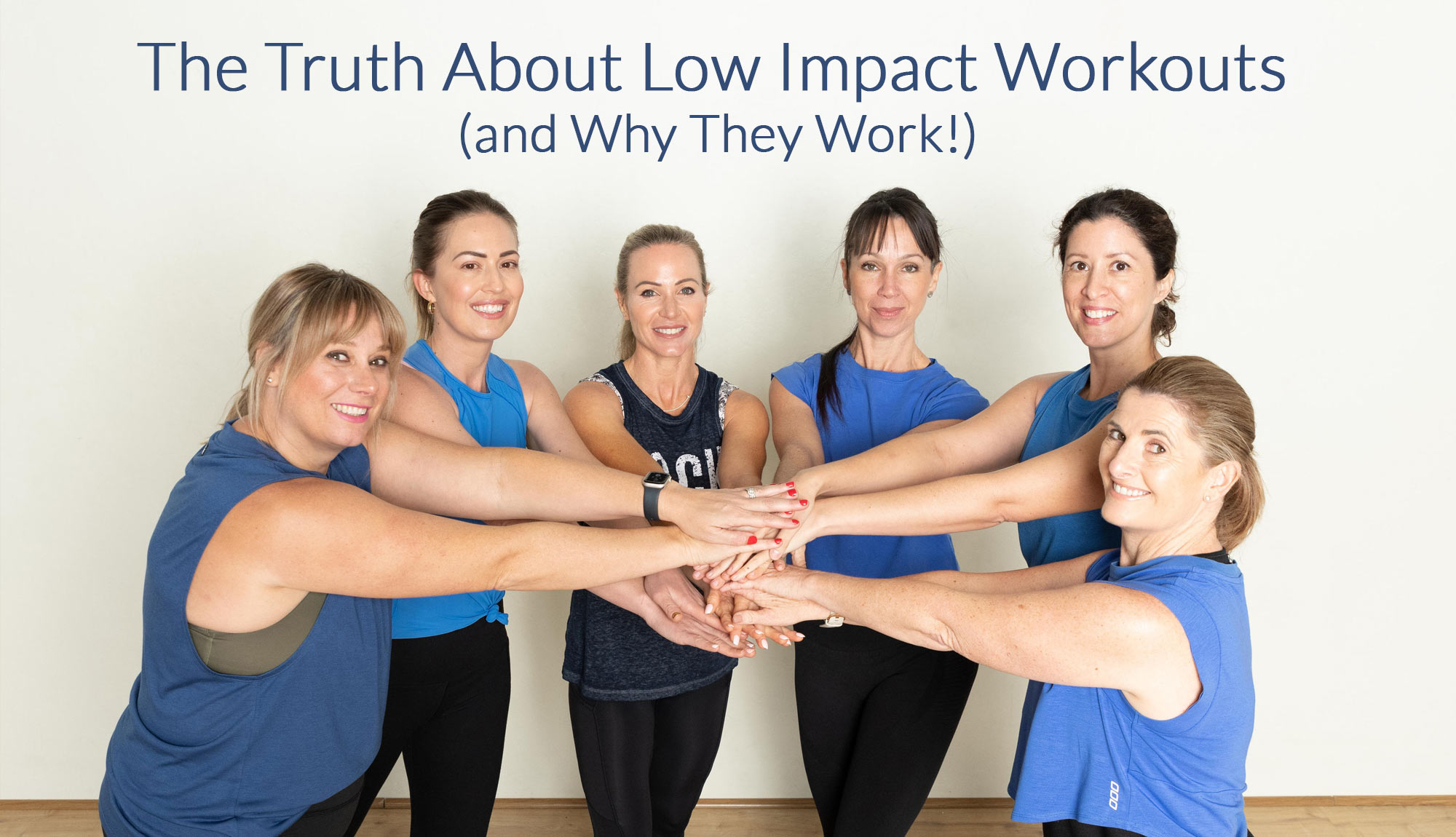When it comes to exercise, one (very) common idea we often hear is that high-intensity, high-impact workouts are the only way to achieve exceptional fitness results. But is this true? Actually, it couldn’t be further from the truth.
Low impact workouts can be very effective and can help you achieve incredible results. The added benefit is that they offer a sustainable, injury-friendly approach to fitness. In other words, you get great sustainable results!
Understanding Low Impact Workouts
So, what qualifies a workout to be low-impact? In general, low-impact workouts are designed to involve minimal stress on your joints. Unlike high-impact workouts (which certainly have their place for some people!), with low impact workouts you will keep at least one foot on the ground at all times.
This approach reduces the risk of injury because it lowers the stressors on your joints and body generally. This makes it ideal for beginners, anyone that has joint worries or anyone who just wants to maintain a consistent exercise routine without overstressing their body.
What are low-impact workouts?
Some typical low-impact workouts might be:
Walking
Cycling
Swimming
Strength training
Pilates
Yoga
TBP workouts(!)
However, almost any workout can be a low impact workout, when it’s executed correctly.
In fact, the key to low-impact workouts is all in the execution. You’ll want to make controlled, deliberate movements that focus on endurance, strength and flexibility rather than speed and impact.
The Benefits of Low-Impact Workouts
More accessible
The best thing about low impact is that almost anyone can take part in these workouts. They’re suitable for beginners, for people with all levels of fitness, for people who are recovering from injuries or other physical limitations and for older people that just want to ensure they’re protecting their joints into the future.
Better for joint health
Low-impact workouts are ideal for maintaining joint health, or for maintaining a consistent exercise program when you’re already struggling with some joint issues. It’s particularly good for people with arthritis or who are recovering from joint injuries.
More versatile
Almost any workout can be modified to become a low-impact exercise. That means that you aren’t limited to exercises that are defined as low impact as long as you understand how to appropriately modify them. And at TBP almost all our workouts offer low impact modifications to suit almost all individuals.
Easier to establish a consistent program
Starting a low-impact workout program can make it easier to maintain for many people. You can start despite your fitness levels (or lack of!) or physical limitations.
Excellent outcomes
Low-impact doesn’t mean low intensity. These workouts (when structured well!) are excellent for both cardiovascular endurance and muscular strength. In fact, with the lower risk of injury, and because it’s often easier to maintain a consistent program, people who focus on a low-impact program might actually see results more quickly.

Better health
As with almost all exercise programs, a good low-impact program will lead to better health outcomes. This can include lower blood pressure, improved strength and flexibility, better mobility and even reduced stress. It can also make you actually feel happier!
Getting Started!
If you’re a part of our community, or have been involved in any of our workouts, you’ll know that at Team Body Project we see fitness as a journey, not a race. That’s why almost all our workouts, plans and programs are fully low impact or offer low impact modifications.
If you’d like to get started on a low impact program, try any one of our 11 Real Start plans. Or you might like to try one of our knee friendly programs (Daniel and Alex both have one!).
We fully believe that low-impact workouts offer a sustainable, inclusive and effective way to achieve your fitness goals. And the best part is you can get started today, no matter where you are on your fitness journey!



